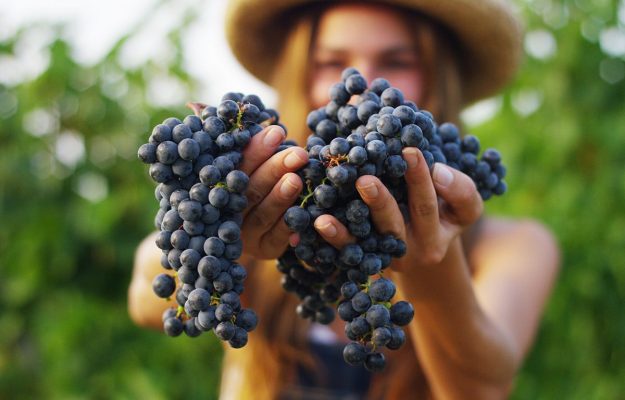The Italian production of wine grapes reached above 70 million quintals in 2020, registering an increase of 3% on 2019, and maintaining itself above 2% on the average of the five-year period 2015-2019, as noted in the report “The prices of wine grapes detected by the Chambers of Commerce - Harvest 2020”. On average, the wine wholesale price index, processed by Unioncamere and Bmti - Borsa Merci Telematica Italiana, was down 1.4% on 2019.
Although there are exceptions, even on the front of wine grape prices, 2020 showed declines in several production areas of our country. In particular, the analysis of the grape price lists detected by the Chambers of Commerce showed, among the Veneto grapes, a further decline for the prices of Glera grapes suitable for the Docg Conegliano - Valdobbiadene, although less pronounced than in the two-year period 2018-2019, at 120 euros per quintal, down 6%. Prices recovering, instead, after the decrease in 2019, for grapes suitable for Amarone and Recioto (between 170 and 175 euros per quintal, +1.4-4.6%) and for grapes suitable for Lugana detected on the square of Verona, at 107.5 euros per quintal, 34.4% more than in 2019.
In Lombardy, a “minus sign” was registered both for the prices of grapes used to produce Franciacorta, down 15.4% to 140 euros per quintal, and for grapes used to produce Oltrepò Pavese wines, down 7% to 50 euros per quintal. On the market of Brescia, on the other hand, an increase was recorded for grapes suitable for Lugana (up 6.3% to 170 euros per quintal). In Piedmont, a further increase was recorded for grapes suitable for the production of Barbera d’Asti, at 78.68 euros per quintal (+4.5%), while in the Cuneo area, according to data shared by Coldiretti, Confagricoltura and Cia - Agricoltori Italiani of Cuneo, the quotations of grapes suitable for the production of Barolo without additional mention decreased (from 350 to 240 euros per quintal, down 31.4%), Barbaresco (from 240 to 200 euros per quintal, down 16.7%) and Barbera d’Alba (at 110 euros per quintal, down 8.3%), with Dolcetto d’Alba stable at 100 euros per quintal, and Langhe Nebbiolo grapes dropping from 140 to 110 euros per quintal (down 21.4% on the last harvest year); the average value for Nebbiolo grapes for Barolo, on the other hand, with “additional geographical mention” is 325 euros per quintal, for Barbaresco with “additional geographical mention” is 255 euros per quintal.
Among the grapes destined for the great Tuscan reds, despite a slight reduction on an annual basis, the grapes suitable for Chianti Classico were in line with 2018 and 2019: 164.38 euros per quintal, for a loss of 5.4%. Quotations appeared to fall decidedly more noticeably both for grapes suitable for Chianti (-18.6% to 60 euros per quintal) and for grapes suitable for Brunello di Montalcino (375 euros per quintal, -11.8%) and Nobile di Montepulciano (140 euros per quintal, -15.2% on 2019). Stable prices, 180 euros per quintal, for Sagrantino di Montefalco grapes. Sign “minus”, among the grapes from Abruzzo, for grapes suitable for Montepulciano d’Abruzzo (-15%, 49.8 euros per quintal), Pecorino (-6.7%, 53.5 euros per quintal) and Trebbiano (-1.6%, at 31 euros per quintal). In the South, among the varieties from Irpinia, Aglianico grapes used to produce Taurasi were stable and sold at 85 euros per quintal. Slight decrease for the grapes suitable for Fiano di Avellino and Greco di Tufo, whose values remain however higher than the average of the five-year period 2015-2019, at 78.33 euros per quintal. Prices in sharp increase for Apulian grapes recorded in the market of Bari.
In addition to the high quality level of the grapes, the good performance in terms of quantities harvested is due to the overall favorable weather conditions, which did not hinder the ripening of the grapes. In contrast to the growth in the quantity of grapes, a slight drop in cellar yields meant that in 2020 wine production was substantially in line with 2019, remaining below 50 million hectoliters (source: Istat). In terms of geographical area, there would be a slight increase in production in the North, supported by the increase in Veneto and Lombardy, whereas in Central and Southern Italy production in Abruzzo and, above all, Sicily (more than -20%) would show a sharp drop.
In particular, Istat data show a contraction of the areas in Sicily, which however remains the first Italian region for wine vines. A "plus" sign, instead, for the hectares in Apulia, Tuscany and, above all, Veneto, a region which in the last five years has seen an increase of vineyards of almost 25%. More generally, the growth of the areas under vines is confirmed in the North-East regions (+10.8% for the hectares in Friuli-Venezia Giulia). After the setback of 2019, the quantities harvested of wine grapes returned to growth in 2020 in Veneto (+5%), which, with about 20% of the total, is confirmed as the first producing region, followed by Puglia (-4.6%), Emilia-Romagna (+14.7%) and Sicily (-1.4%). These four regions represent about 60% of the Italian production of wine grapes. Among the other regions, it should be noticed the strong increase recorded in Friuli-Venezia Giulia, almost equal to an annual increase of 40%, and in Lombardy, where the quantities increased by more than 10% thanks to a vintage marked by a good climate trend. Among the regions of the Center, a contraction in the quantities harvested was recorded in Abruzzo (-4.4%).
Copyright © 2000/2025
Contatti: info@winenews.it
Seguici anche su Twitter: @WineNewsIt
Seguici anche su Facebook: @winenewsit
Questo articolo è tratto dall'archivio di WineNews - Tutti i diritti riservati - Copyright © 2000/2025








































































































































































































